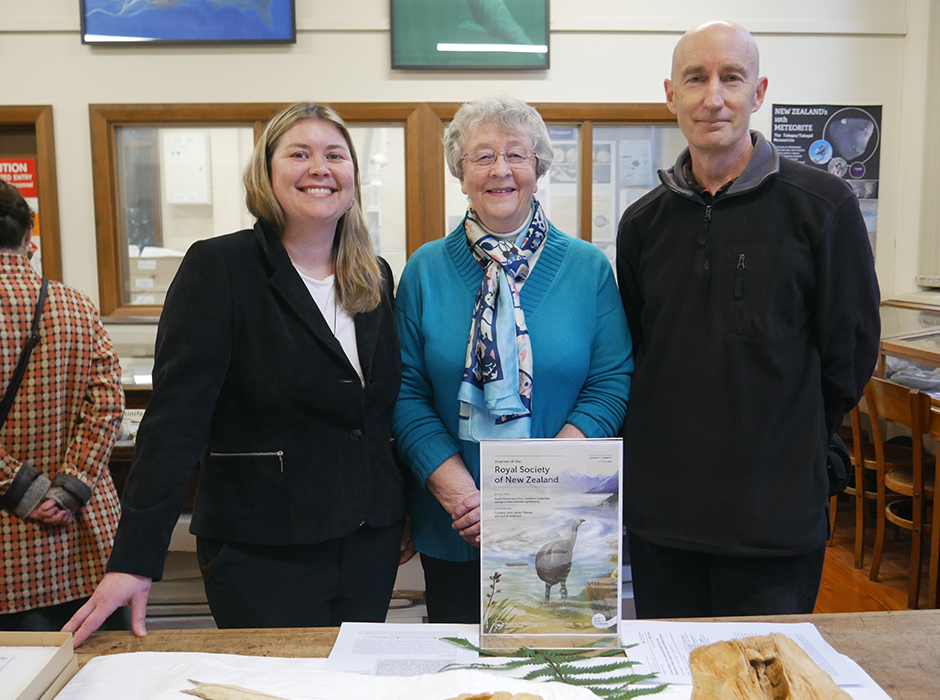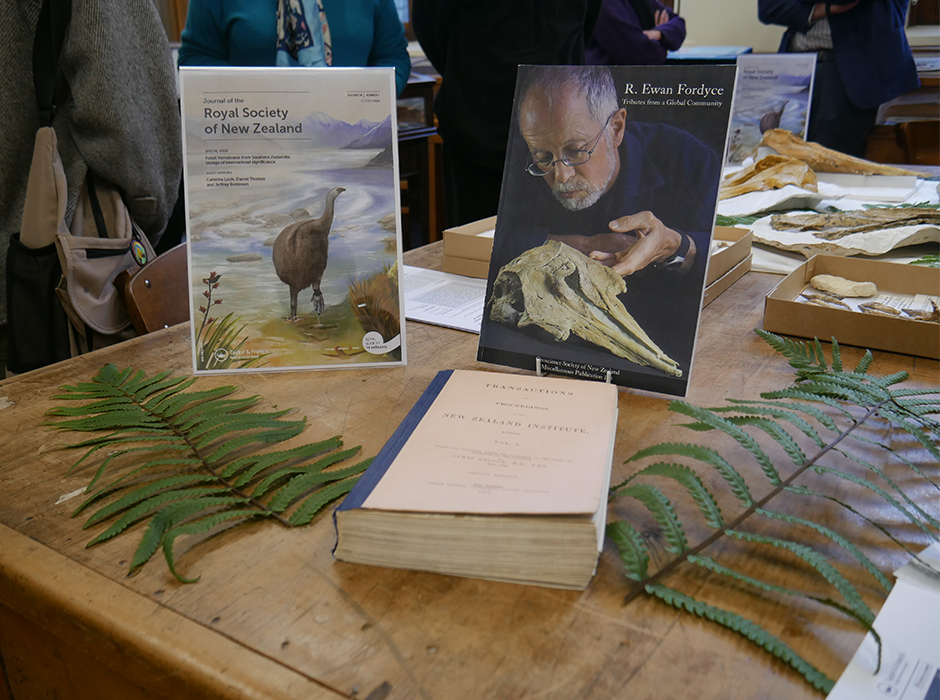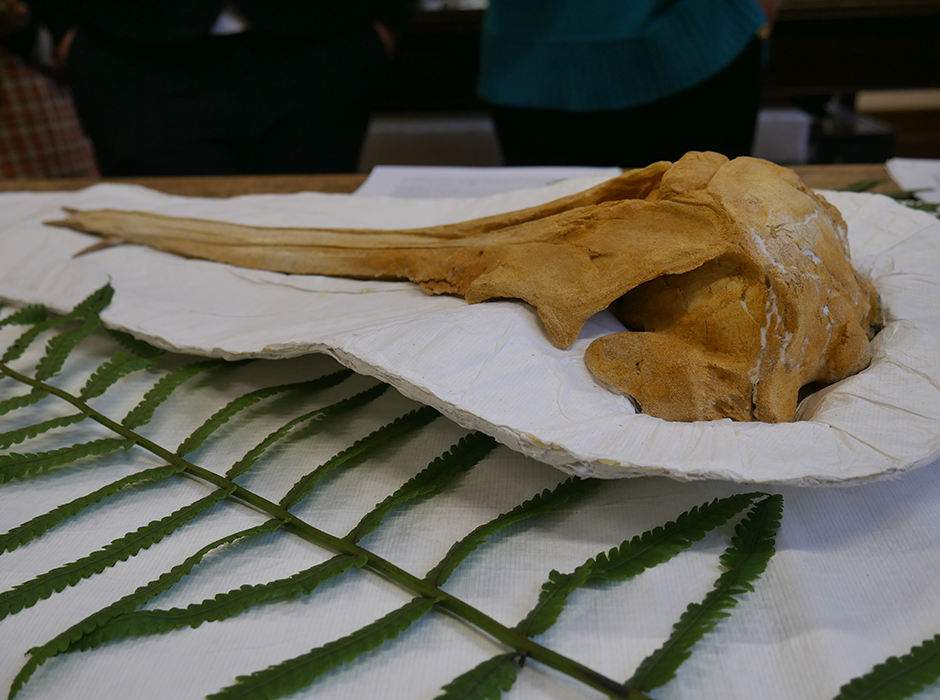
Celebrating the launch of a special issue of The Journal of the Royal Society of New Zealand is (from left) co-editor Dr Carolina Loch, Emeritus Professor Daphne Lee, and co-editor Dr Jeffrey Robinson.
The University of Otago’s Geology Museum is filled with fossil treasures including many discovered by the late Professor Ewan Fordyce during his outstanding 40-year career.
And now, some of them feature on the pages of a new special issue of The Journal of the Royal Society of New Zealand, which celebrates his legacy and illustrious career.
The issue, entitled ‘Fossil Vertebrates from Southern Zealandia’, is dedicated to Ewan and his career as a paleontologist, researcher and educator.
On Tuesday evening, friends, family and colleagues gathered at the museum to launch the journal and celebrate Ewan’s work.
Dr Carolina Loch, of the Sir John Walsh Research Institute at the Faculty of Dentistry, who is an editor of the special issue with Dr Daniel Thomas and Dr Jeffrey Robinson, says the journal was about two years in the making.
“I’m sad Ewan is not here to see it, but I think he will be very proud of the efforts,” she says.

Some of the objects on display at the launch at the Geology Museum, including a copy of the first edition of the journal from 1868 (bottom).
The journal features 13 research papers and one editorial on fossil vertebrates from Aotearoa, including whales, penguins, dolphins, bony fish, sharks, moa and an albatross.
Most of the fossils are housed in the Geology Museum and many were on display for the launch event, alongside their corresponding research papers.
At least ten of the papers are authored by previous students of Ewan, highlighting his dedication to teaching the next generation of researchers.
His long-time colleague and friend Emeritus Professor Daphne Lee, who proposed the idea of the special issue in his honour, says the museum was an important place for Ewan, so it is “absolutely appropriate” for the launch to be held there.
The museum cabinets and geology basement are filled with “Ewan’s treasures” and hold a great deal of his scientific legacy.
Daphne and Ewan made sure the fossils in the museum are always available to the public.
“The geology department holds these fossil treasures in trust for the University of Otago, the local community in Otago and Southland, and the international scientific community around the world,” she said.

Fossil dolphin Nihoroa reimaea, with tusk-like teeth, features in the special issue.
Daphne, who has continued to be heavily involved with students, research and public outreach in the department since her retirement in 2018, spoke about the many research papers based on fossils in the museum.
“Much of the research is carried out in collaboration with former students in the Department of Geology who have been supervised by Ewan and me over the past 40 years, but the scientific ripples from these former students, now colleagues, extend far further afield.
“The scientific reputation of the paleontological research carried out in the department is truly international.”
Head of the Department of Geology Professor Andrew Gorman and Deputy Vice-Chancellor (Research and Enterprise) Professor Richard Blaikie congratulated the editorial team for their work on putting the journal together.
Richard shared memories of Ewan and, as a Fellow of the Royal Society, was looking forward to having a copy of the special issue displayed proudly on his bookshelf.
“Thank you for creating the special issue that will be a beacon for the kind of work that is possible,” Richard says.
Carolina reflects that the task of completing the special issue had not sunk in yet.
“I hope we made Ewan proud, and he doesn’t need to use his red pen too much,” she jokes.
“I am sure he is sitting on the steps in the sun, reading the papers and sipping his coffee from wherever he is.”